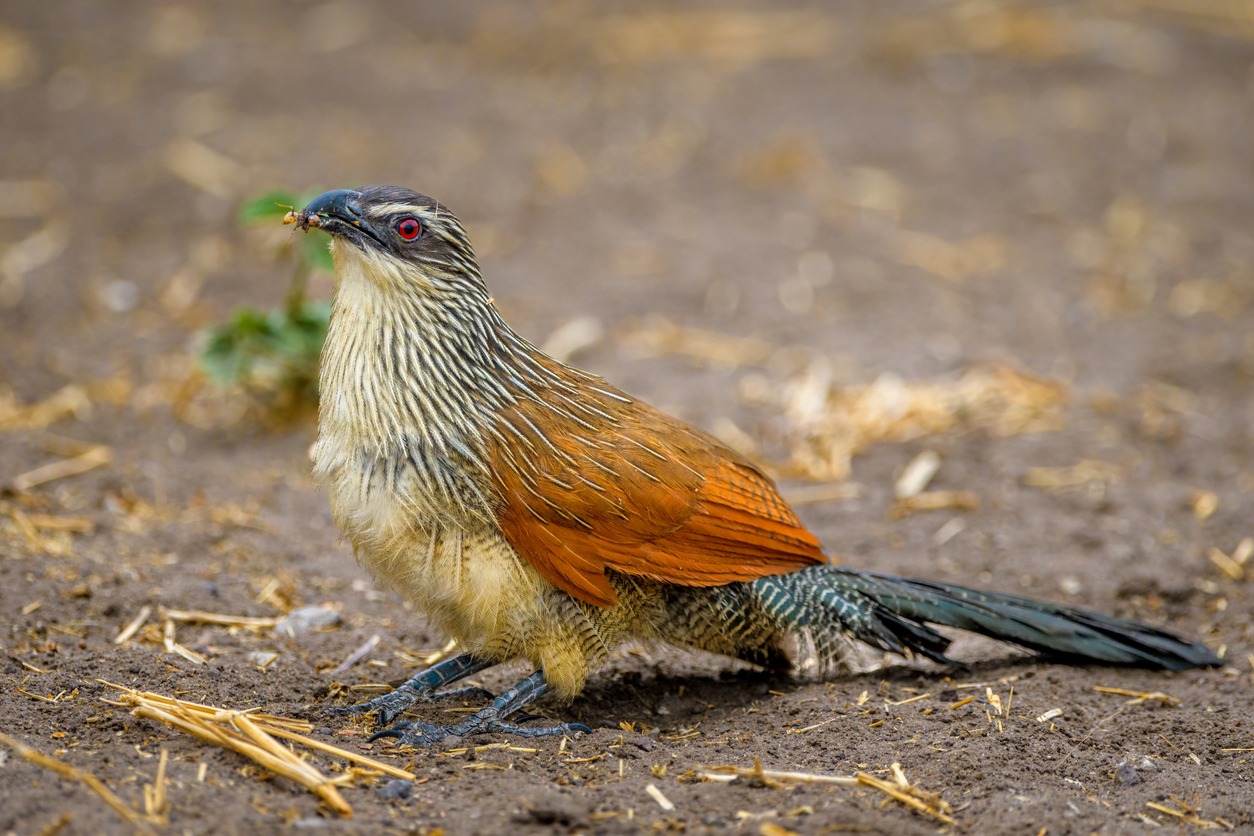It is a large, full-bodied, gawky bird from the cuckoo family, with a spotted rump and uppertail tectrices, making it easily recognizable from other coucals. Plus, it has its distinct white eyebrow, where it gots its name. It produces profound, descending “bu-bu-bu bu bu bu” notes, which often falls and rises in pitch.
Read further to know more about the White-browed Coucal.
What is a White-browed Coucal?
White-browed Coucal (Centropus superciliosus) is a bird species of cuckoo that occurs south of the Saharan Desert. It is one of the commonest coucals, though it is not present in the more arid, dry regions. This bird thrives in areas blessed with dense covers brimmed with rank vegetation and shrubs, and other preferable coastal regions. The Burchell’s Coucal (Centropus burchellii) is often regarded as its subspecies.
Its seven levels of classification are as follows:
Kingdom: Animalia
Phylum: Chordata
Class: Aves
Order: Cuculiformes
Family: Cuculidae
Genus: Centropus
Species: C. superciliosus
White-browed Coucal Physical Description
White-browed coucals are medium-sized birds growing from 14 to 17 inches or 36 to 42 centimeters in length. They boast a striking plumage, chestnut wings, blackish rump, nape and crown, chestnuts wings, brownish back, and black tail, accentuated with a green gloss. What makes it stand out from other coucal in its range is white superciliary stripe, from which it gots its name. Their underparts are whites. Beaks are black, eyes are red, while their feet and legs can be grayish-black to black.
Males and females look similar. Their juveniles or immature birds have a reddish-brown streak on their crown, spotted upperparts, and darker underparts. Their superciliary stripe is yet to be white, sporting a dull buff color.
Where can they be spotted?
White-browed coucals thrive in various habitats, such as wetlands, marshes, fens, swamps, and peatlands, where there are ample shrubs. They can also occur near streams, rivers, creeks, and even waterfalls.
Their species is native to southern and easter Africa, and southwestern region of the Arabian peninsula. White-browed coucals’ range includes Angola, Burundi, Botswana, Congo, DR Congo, Ethiopia, Eritrea, Kenya, Malawi, Saudi Arabia, Sudan, Somalia, Uganda, Tanzania, Zimbabwe, Zambia, and Yemen.
Interesting Facts You Should Know About the White-browed Coucal
White-browed coucals feed primarily on insects, such as locusts, crickets, grasshoppers, and beetles. However, it will also take smaller mammals, younger birds, and eggs if it comes their way.
These birds are not really known for their flying skills, as its flight is labored and hefty. White-browed coucals will tend to hide instead under shrubs, rank undergrowth, and water vegetations in an awkward or clumsy manner.
They have a distinct call, described like water pouring or gurgling from a bottle, and is believed to signal upcoming rainfall, which earned the bird species the names: water-bottle bird and rainbird.
Like its other cousins for the Centropidinae family, these birds are non-parasitic, which means they will raise their own young. The male will build the nest for 3-5 eggs, using stems and grass, typically shaped like a sphere with a side entrance. The male white-browed coucal will also shoulder incubation and most of the feeding task.
White-browed coucals occur in an extensive range and are classified as a ‘Least Concern’ species under the International Union for Conservation of Nature Red List.
WILDLIFE PARKS AND RESERVES WHERE THIS SPECIES IS FOUND:
ZAMBIA
BOTSWANA
SOUTH AFRICA
ZIMBABWE
BOTSWANA BIRDS | SOUTH AFRICA BIRDS
NAMIBIA BIRDS | ZAMBIA BIRDS | ZIMBABWE BIRDS

